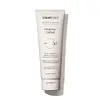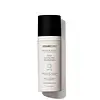What's inside
What's inside
 Key Ingredients
Key Ingredients

 Benefits
Benefits

 Concerns
Concerns

 Ingredients Side-by-side
Ingredients Side-by-side

Titanium Dioxide 2%
Cosmetic ColorantZinc Oxide 17%
Cosmetic ColorantDimethicone
EmollientCaprylic/Capric Triglyceride
MaskingDimethicone Crosspolymer
Emulsion StabilisingDimethicone/Vinyl Dimethicone Crosspolymer
Skin ConditioningButyloctyl Salicylate
Skin ConditioningGlyceryl Isostearate
EmollientPolysilicone-15
UV FilterTetrahexyldecyl Ascorbate
AntioxidantCamellia Sinensis Leaf Extract
AntimicrobialPunica Granatum Extract
AstringentVaccinium Macrocarpon Fruit Extract
AstringentSilica
AbrasivePolyhydroxystearic Acid
EmulsifyingCI 77891
Cosmetic ColorantCI 77492
Cosmetic ColorantCI 77491
Cosmetic ColorantCI 77499
Cosmetic ColorantTitanium Dioxide 2%, Zinc Oxide 17%, Dimethicone, Caprylic/Capric Triglyceride, Dimethicone Crosspolymer, Dimethicone/Vinyl Dimethicone Crosspolymer, Butyloctyl Salicylate, Glyceryl Isostearate, Polysilicone-15, Tetrahexyldecyl Ascorbate, Camellia Sinensis Leaf Extract, Punica Granatum Extract, Vaccinium Macrocarpon Fruit Extract, Silica, Polyhydroxystearic Acid, CI 77891, CI 77492, CI 77491, CI 77499
Butyl Methoxydibenzoylmethane 3%
UV AbsorberOctocrylene 2.75%
UV AbsorberEthylhexyl Salicylate 5%
UV AbsorberWater
Skin ConditioningButyloctyl Salicylate
Skin ConditioningGlycerin
HumectantHelianthus Annuus Seed Oil
EmollientDimethicone
EmollientZea Mays Oil
EmulsifyingPolyester-8
Skin ConditioningCoco-Caprylate/Caprate
EmollientPolysilicone-15
UV FilterSodium Stearoyl Glutamate
CleansingPanthenol
Skin ConditioningVitis Vinifera Callus Culture Extract
Sodium Ascorbyl Phosphate
AntioxidantCamellia Sinensis Leaf Extract
AntimicrobialAloe Barbadensis Leaf Extract
EmollientCaffeine
Skin ConditioningProline
Skin ConditioningPhytosphingosine
Skin ConditioningCeramide AP
Skin ConditioningCeramide EOP
Skin ConditioningCeramide NP
Skin ConditioningSodium Hyaluronate
HumectantAllantoin
Skin ConditioningChamomilla Recutita Extract
Skin ConditioningNiacinamide
SmoothingTremella Fuciformis Extract
HumectantMacadamia Integrifolia Seed Oil
Skin ConditioningOlea Europaea Fruit Oil
MaskingRosa Moschata Seed Oil
EmollientLavandula Angustifolia Oil
MaskingDiatomaceous Earth
AbrasiveLaminaria Digitata Extract
Skin ProtectingFerric Hexapeptide-35
Skin ConditioningMelaleuca Alternifolia Leaf Oil
AntioxidantCaprylic/Capric Triglyceride
MaskingCaprylyl Glycol
EmollientSodium Polyacrylate
AbsorbentSesamum Indicum Seed Oil
EmollientRosmarinus Officinalis Leaf Extract
AntimicrobialTeprenone
Skin ConditioningLecithin
EmollientMica
Cosmetic ColorantSorbitol
HumectantAcrylates/C10-30 Alkyl Acrylate Crosspolymer
Emulsion StabilisingCaprylhydroxamic Acid
Ethylhexylglycerin
Skin ConditioningCholesterol
EmollientCarbomer
Emulsion StabilisingXanthan Gum
EmulsifyingSodium Lauroyl Lactylate
EmulsifyingSodium Hydroxide
BufferingTbhq
AntioxidantPhenylpropanol
MaskingCI 77891
Cosmetic ColorantButyl Methoxydibenzoylmethane 3%, Octocrylene 2.75%, Ethylhexyl Salicylate 5%, Water, Butyloctyl Salicylate, Glycerin, Helianthus Annuus Seed Oil, Dimethicone, Zea Mays Oil, Polyester-8, Coco-Caprylate/Caprate, Polysilicone-15, Sodium Stearoyl Glutamate, Panthenol, Vitis Vinifera Callus Culture Extract, Sodium Ascorbyl Phosphate, Camellia Sinensis Leaf Extract, Aloe Barbadensis Leaf Extract, Caffeine, Proline, Phytosphingosine, Ceramide AP, Ceramide EOP, Ceramide NP, Sodium Hyaluronate, Allantoin, Chamomilla Recutita Extract, Niacinamide, Tremella Fuciformis Extract, Macadamia Integrifolia Seed Oil, Olea Europaea Fruit Oil, Rosa Moschata Seed Oil, Lavandula Angustifolia Oil, Diatomaceous Earth, Laminaria Digitata Extract, Ferric Hexapeptide-35, Melaleuca Alternifolia Leaf Oil, Caprylic/Capric Triglyceride, Caprylyl Glycol, Sodium Polyacrylate, Sesamum Indicum Seed Oil, Rosmarinus Officinalis Leaf Extract, Teprenone, Lecithin, Mica, Sorbitol, Acrylates/C10-30 Alkyl Acrylate Crosspolymer, Caprylhydroxamic Acid, Ethylhexylglycerin, Cholesterol, Carbomer, Xanthan Gum, Sodium Lauroyl Lactylate, Sodium Hydroxide, Tbhq, Phenylpropanol, CI 77891
 Reviews
Reviews

Ingredients Explained
These ingredients are found in both products.
Ingredients higher up in an ingredient list are typically present in a larger amount.
Butyloctyl Salicylate is a chemical UV filter structurally similar to octisalate. It is a photostabilizer, SPF booster, emollient and solvent. This ingredient helps evenly spread out ingredients.
According to a manufacturer, it is suitable for pairing with micro Titanium Dioxide, Zinc Oxide, and pigments.
Photostabilizers help stabilize UV-filters and prevents them from degrading quickly.
Learn more about Butyloctyl SalicylateCamellia Sinensis Leaf Extract is derived from the leaves of the tea plant. Black tea, green tea, and oolong tea are all harvested from this plant.
This ingredient has many skin benefits:
This ingredient contains polyphenols, a strong antioxidant. Antioxidants help fight off molecules that damage skin cells.
On top of that, the antioxidants in green tea neutralize free-radicals from the sun. This gives the skin some extra UV protection, but should not replace sunscreen.
Many components of tea have anti-inflammatory properties.
Polyphenols and L-theanine help soothe the skin and reduce irritation. The caffeine in Camellia Sinensis Leaf Extract helps calm inflamed blood vessels.
Other compounds found in tea include: Vitamin Bs, linoleic acid, magnesium, calcium, iron, and zinc.
Research has shown both drinking Camellia Sinensis Leaf Tea and applying it to the skin can help boost skin elasticity and hydration. Studies also show using tea extract may reduce sebum, or oil, production.
Learn more about Camellia Sinensis Leaf ExtractThis ingredient is an emollient, solvent, and texture enhancer. It is considered a skin-softener by helping the skin prevent moisture loss.
It helps thicken a product's formula and makes it easier to spread by dissolving clumping compounds.
Caprylic Triglyceride is made by combining glycerin with coconut oil, forming a clear liquid.
While there is an assumption Caprylic Triglyceride can clog pores due to it being derived from coconut oil, there is no research supporting this.
Learn more about Caprylic/Capric TriglycerideCi 77891 is a white pigment from Titanium dioxide. It is naturally found in minerals such as rutile and ilmenite.
It's main function is to add a white color to cosmetics. It can also be mixed with other colors to create different shades.
Ci 77891 is commonly found in sunscreens due to its ability to block UV rays.
Learn more about CI 77891Dimethicone is a type of synthetic silicone created from natural materials such as quartz.
What it does:
Dimethicone comes in different viscosities:
Depending on the viscosity, dimethicone has different properties.
Ingredients lists don't always show which type is used, so we recommend reaching out to the brand if you have questions about the viscosity.
This ingredient is unlikely to cause irritation because it does not get absorbed into skin. However, people with silicone allergies should be careful about using this ingredient.
Note: Dimethicone may contribute to pilling. This is because it is not oil or water soluble, so pilling may occur when layered with products. When mixed with heavy oils in a formula, the outcome is also quite greasy.
Learn more about DimethiconePolysilicone-15 is a chemical UV filter that absorbs UV-B rays.
It is a photostable ingredient used to boost SPF factor and protect products from UV-induced deterioration.
This ingredient is not water-soluble.
Learn more about Polysilicone-15